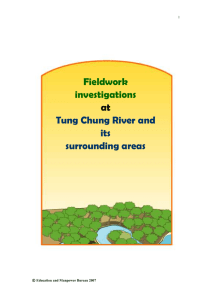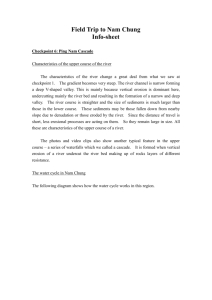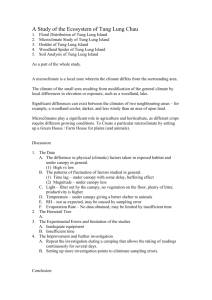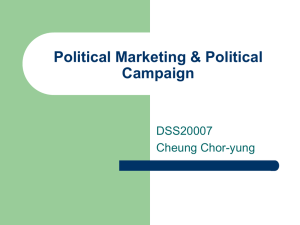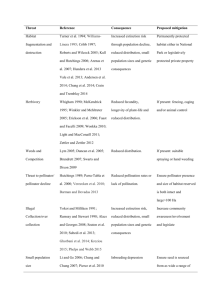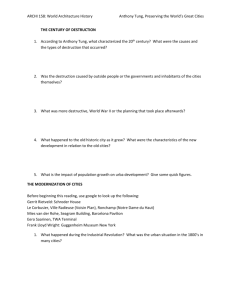Green Groups Urge for Protection and Conservation of Tung Chung
advertisement
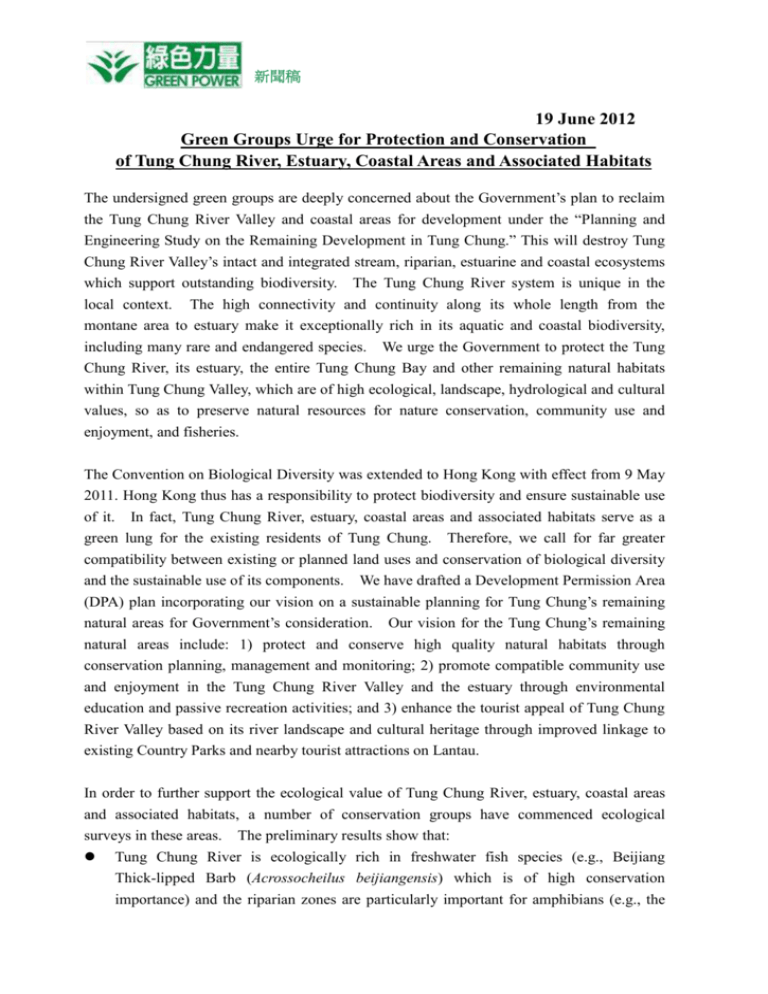
新聞稿 19 June 2012 Green Groups Urge for Protection and Conservation of Tung Chung River, Estuary, Coastal Areas and Associated Habitats The undersigned green groups are deeply concerned about the Government’s plan to reclaim the Tung Chung River Valley and coastal areas for development under the “Planning and Engineering Study on the Remaining Development in Tung Chung.” This will destroy Tung Chung River Valley’s intact and integrated stream, riparian, estuarine and coastal ecosystems which support outstanding biodiversity. The Tung Chung River system is unique in the local context. The high connectivity and continuity along its whole length from the montane area to estuary make it exceptionally rich in its aquatic and coastal biodiversity, including many rare and endangered species. We urge the Government to protect the Tung Chung River, its estuary, the entire Tung Chung Bay and other remaining natural habitats within Tung Chung Valley, which are of high ecological, landscape, hydrological and cultural values, so as to preserve natural resources for nature conservation, community use and enjoyment, and fisheries. The Convention on Biological Diversity was extended to Hong Kong with effect from 9 May 2011. Hong Kong thus has a responsibility to protect biodiversity and ensure sustainable use of it. In fact, Tung Chung River, estuary, coastal areas and associated habitats serve as a green lung for the existing residents of Tung Chung. Therefore, we call for far greater compatibility between existing or planned land uses and conservation of biological diversity and the sustainable use of its components. We have drafted a Development Permission Area (DPA) plan incorporating our vision on a sustainable planning for Tung Chung’s remaining natural areas for Government’s consideration. Our vision for the Tung Chung’s remaining natural areas include: 1) protect and conserve high quality natural habitats through conservation planning, management and monitoring; 2) promote compatible community use and enjoyment in the Tung Chung River Valley and the estuary through environmental education and passive recreation activities; and 3) enhance the tourist appeal of Tung Chung River Valley based on its river landscape and cultural heritage through improved linkage to existing Country Parks and nearby tourist attractions on Lantau. In order to further support the ecological value of Tung Chung River, estuary, coastal areas and associated habitats, a number of conservation groups have commenced ecological surveys in these areas. The preliminary results show that: Tung Chung River is ecologically rich in freshwater fish species (e.g., Beijiang Thick-lipped Barb (Acrossocheilus beijiangensis) which is of high conservation importance) and the riparian zones are particularly important for amphibians (e.g., the 新聞稿 endemic Romer’s Tree Frog (Liuixalus romeri) and, the Hong Kong Newt (Paramesotriton hongkongensis)). Tung Chung Estuary is characterised by mudflat, mangrove, saltmarsh and seagrass habitats and the San Tau seagrass bed SSSI is located on its western side. The estuary is home to various mangrove plant and animal species and is also the breeding and nursery ground for two horseshoe crab species (Chinese Horseshoe Crab (Tachypleus tridentatus) and Mangrove Horseshoe Crab (Carcinoscorpius rotundicauda)) and one pipefish species (Seaweed Pipefish (Syngnathus schlegeli)), demonstrating its high ecological value and importance in local context. Tung Chung Bay is also exceptional in terms of economically important juvenile fish and crustacean species, which shows that Tung Chung Bay is an important nursery area of commercial fisheries resources. The bay is also a foraging ground for some important wetland bird species like Swinhoe’s Egret (Egretta eulophotes) and Pacific Reef Egret (Egretta sacra). Tung Chung Valley is largely covered with wooded areas and several Fung Shui Woodlands are identified. The secondary woodlands surrounding Tung Chung Valley are good in quality and are used by many fauna species. Four butterfly species of conservation importance are recorded near the Tung Chung woodlands, including Oriental Striped Blue (Leptotes plinius), Peacock Royal (Tajuria cippus), Golden Birdwing (Troides aeacus) and Common Birdwing (Troides helena). Part of Tung Chung River, its riparian habitats and its estuarine habitats have been severely damaged from haphazard development over the last decade and it is time to provide appropriate planning and protection to the remaining key sites. In view of the intactness, uniqueness and intricate ecology of Tung Chung River Valley, estuary and coastal areas and the social benefits of conserving these areas for public use and tourist attraction, any adverse impacts of development or incompatible uses in these areas must be avoided. Therefore, we strongly urge the government to: a. Prohibit civil engineering work, channelization and reclamation in Tung Chung River courses and banks, estuary and the entire Tung Chung Bay. b. Prohibit any discharge of effluents and connection of outfalls to Tung Chung River channels and esturary. Any landuse or activity that brings about water pollution must be removed from the Tung Chung River banks and the shores of Tung Chung Bay. c. Rehabilitate the channelized/ damaged artificial river sections. 新聞稿 d. Adopt our recommended DPA plan to guide a sustainable planning and development in Tung Chung. e. Terminate the present planning and engineering study on the remaining development in Tung Chung and not to fast-track the landuse planning, engineering feasibility and EIA study processes. We consider that the present proposed plan to reclaim Tung Chung Bay, with new town development as the decided objective, pre-empts the landuse planning and EIA process. Co-signed Groups Remark:This is a joint press release from Green Power, Designing Hong Kong, Eco-Education & Resources Centre, Green Lantau Association, Hong Kong Bird Watching Society, The Conservancy Association and WWF-Hong Kong.

